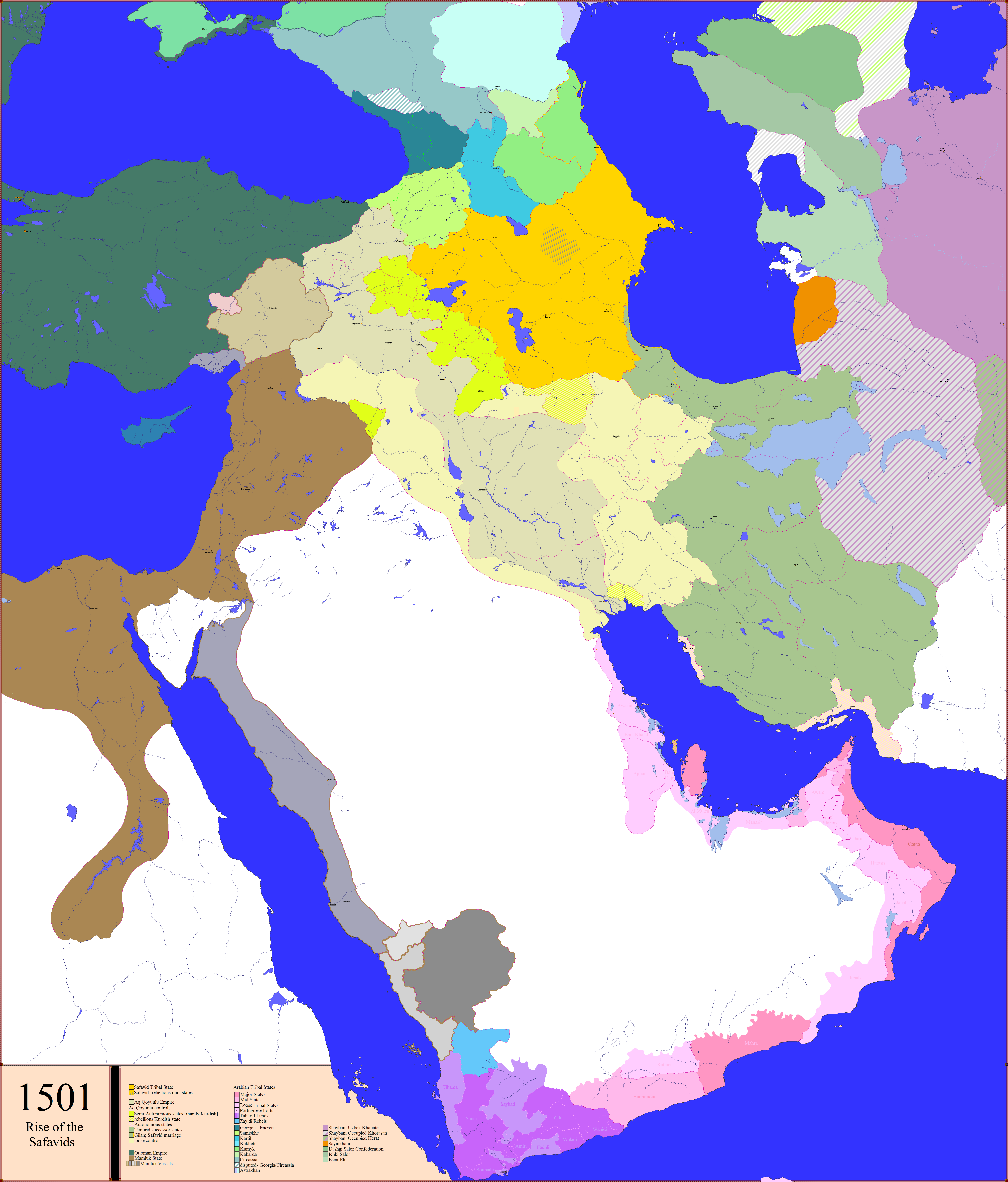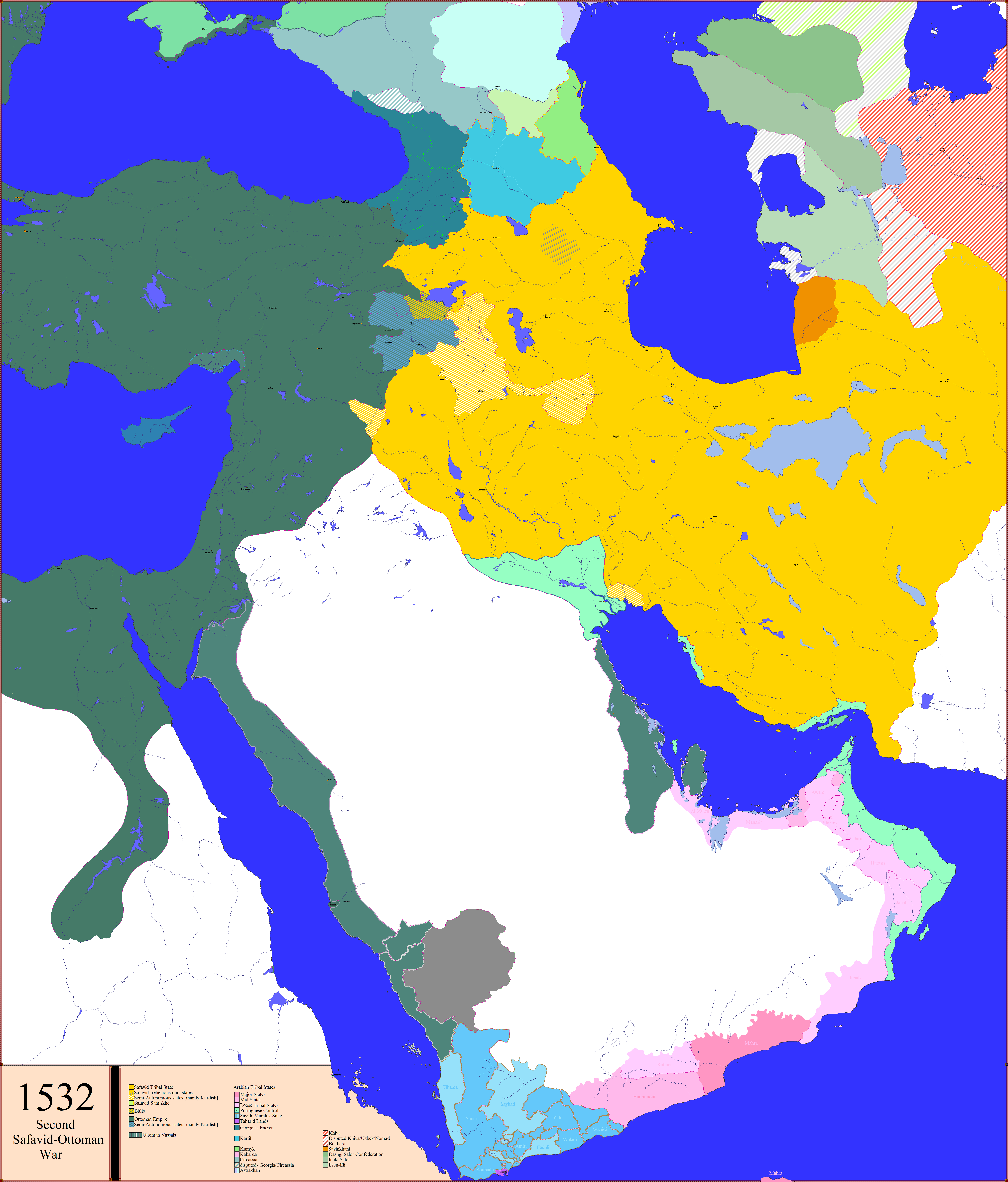HOME | DD
 BobHopeXIVRedux — E2.1501
BobHopeXIVRedux — E2.1501

Published: 2022-04-21 20:32:29 +0000 UTC; Views: 1173; Favourites: 5; Downloads: 8
Redirect to original
Description
The Aq Qoyunlu or “White Sheep Turkomen”
A tribal confederation that ruled parts of present-day eastern Turkey from 1378 to 1501, and in their last decades also ruled Armenia, Azerbaijan, most of Iran, and Iraq.
The Aq Qoyunlu Turkomen first acquired land in 1402, when Timur granted them all of Diyarbakr in present-day Turkey. Initially the Aq Qoyunlu were unable to expand their territory, the rival Kara Koyunlu or “Black Sheep Turkomen” kept them at bay, however, in 1467, Uzun Hasan defeated the Black Sheep Turkomen leader Jahān Shāh.
After the defeat of Abu Sa'id Mirza, a Timurid leader, Uzun Hasan was able to take Baghdad along with territories around the Persian Gulf. He expanded into Iran as far east as Khorasan.
Around this time, the Ottoman Empire started to expand eastwards, forcing the Aq Qoyunlu into an alliance with the Karamanids of central Anatolia. Uzun Hasan was defeated by the Ottomans at the Battle of Otlukbeli in 1473, though this did not destroy the Aq Qoyunlu.
When Uzun Hasan died early in 1478, he was succeeded by his son Khalil Mirza, but he was defeated by a confederation including his younger brother Ya'qub at the Battle of Khoy in July.
Ya'qub reigned from 1478 to 1490, during the first four years of his reign there were seven pretenders to the throne who had to be put down. Following Ya'qub's death, civil war again erupted and the Aq Qoyunlu destroyed themselves from within, no longer a threat to their neighbors. The early Safavids, followers of the Safaviyya religious order, began to undermine the allegiance of the Aq Qoyunlu. The Safavids and the Aq Qoyunlu met in battle in the city of Nakhchivan in 1501 and the Safavid leader Ismāil I forced the Aq Qoyunlu to withdraw.
Whilst retreating from the Safavids, the Aq Qoyunlu leader Alwand destroyed an autonomous Aq Qoyunlu state in Mardin. The last Aq Qoyunlu leader, Murād, brother of Alwand, was also defeated by Ismāil I. Though Murād briefly established himself in Baghdad in 1501, he soon withdrew back to Diyarbakr, signaling the end of the Aq Qoyunlu rule.
The Kara Koyunlu or Qara Qoyunlu or “Black Sheep Turkomen”
A tribal confederation that ruled territory comprising present-day Azerbaijan, Georgia, Armenia, northwestern Iran, eastern Turkey, and northeastern Iraq from about 1374 to 1468.
The Kara Koyunlu Turkomen were initially vassals of the Jalairid Sultanate in Baghdad and Tabriz from about 1375, when the leader of the leading tribe ruled over Mosul. They rebelled against the Jalairids, and secured independence with the conquest of Tabriz by Qara Yusuf. In 1400, Timur defeated the Kara Koyunlu, and Qara Yusuf fled to Egypt, seeking refuge with the Mamluk Sultanate. He gathered an army and by 1406 had taken back Tabriz.
In 1410, the Kara Koyunlu captured Baghdad installing a subsidiary Kara Koyunlu line there. Also in 1410, Armenia fell under the control of the Kara Koyunlu however, Qara Iskander made Armenia a "desert" subjecting it to "devastation and plunder, to slaughter, and captivity".
When the Timurids launched their incursion into the region, they convinced Jahān Shāh, Iskander's brother, to turn on his brother. Jahān Shāh made peace with the Timurid Shahrukh Mirza; however, this soon fell apart. When Shahrukh Mirza died in 1447, the Kara Koyunlu Turkomen annexed portions of Iraq and the eastern coast of the Arabian Peninsula as well as Timurid-controlled western Iran. Though much territory was gained during his rule, Jahān Shāh's reign was troubled by his rebellious sons and the almost autonomous rulers of Baghdad, whom he expelled in 1464. In 1466, Jahān Shāh attempted to take Diyarbakr from the Aq Qoyunlu however, this was a catastrophic failure resulting in Jahān Shāh's death and the collapse of Kara Koyunlu Turkomen control in the Middle East. By 1468 Uzun Hasan of the Aq Qoyunlu defeated the Kara Koyunlu and conquered Iraq, Azerbaijan, and western Iran.
The Safavid Empire
The Safavids were established in the city of Ardabil in the Azerbaijan region. Shaykh Junāyd assumed religious leadership of the Safaviyya in 1447. Jahan Shah, ruler of the Kara Koyunlu, ordered Junāyd to leave Ardabil or risk destruction and ruin of the city. Junāyd sought refuge with the Aq Qoyunlu Khan, Uzun Hasan, cementing the relationship by marrying Uzun’s sister, Khadija Begum. Junāyd was killed during an incursion into the territories of the Shirvanshah and was succeeded by his son Haydar Safavi who married Martha ‘Alamshah Begum, Uzun Hasan‘s daughter, who gave birth to Ismāil I, founder of the Safavid dynasty.
After Uzun Hasan’s death, his son Ya’qub felt threatened by the growing Safavid religious influence. Ya’qub allied himself with the Shirvanshah and killed Haydar in 1488.
After Haydar’s death, the Safaviyya gathered around his son Ali Mirza Safavi, who was also pursued and subsequently killed by Ya’qub.
Persia was politically splintered and the demise of Tamerlane’s political authority created a space in which several religious communities could now come to the fore and gain prominence. There were many local states prior to the Iranian state established by Ismāil. The most important local rulers about 1500 were:
Huṣayn Bāyqarā, the Timurid ruler of Herāt
Alwand Mīrzā, the Aq Qoyunlu Khan of Tabrīz
Murad Beg, Aq Qoyunlu ruler of Irāq al-Ajam
Farrokh Yaṣar, the Shah of Širvan
Badi Alzamān Mīrzā, local ruler of Balkh
Huṣayn Kīā Chalavī, the local ruler of Semnān
Murād Beg Bayandar, local ruler of Yazd
RISE OF THE SAFAVID STATE
The Safavid dynasty was founded about 1501 by Shāh Ismāil I.
In 1500, Ismāil invaded neighbouring Shirvan to avenge the death of his father, Sheikh Haydar, who had been murdered in 1488 by the ruling Shirvanshah, Farrukh Yassar. Ismāil went on to conquer Tabriz in July 1501, where he enthroned himself the Shāh of Azerbaijan and proclaimed himself Shahanshah of Iran, proclaiming Shi’ism the official religion of his domain.
A year after his victory in Tabriz, Ismāil claimed most of Persia as part of his territory, and within 10 years established a complete control over all of it. Hamadan fell under his power in 1503, Shiraz and Kerman in 1504, Najaf and Karbala in 1507, Van in 1508, Baghdad in 1509, and Herat, as well as other parts of Khorasan, in 1510. In 1511, the Uzbeks in the north-east, led by their Khan Muhammad Shaybāni, were driven north, across the Oxus River, from where they continued to attack the Safavids. Ismāil’s decisive victory over the Uzbeks, who had occupied most of Khorasan, ensured Iran’s eastern borders.
























